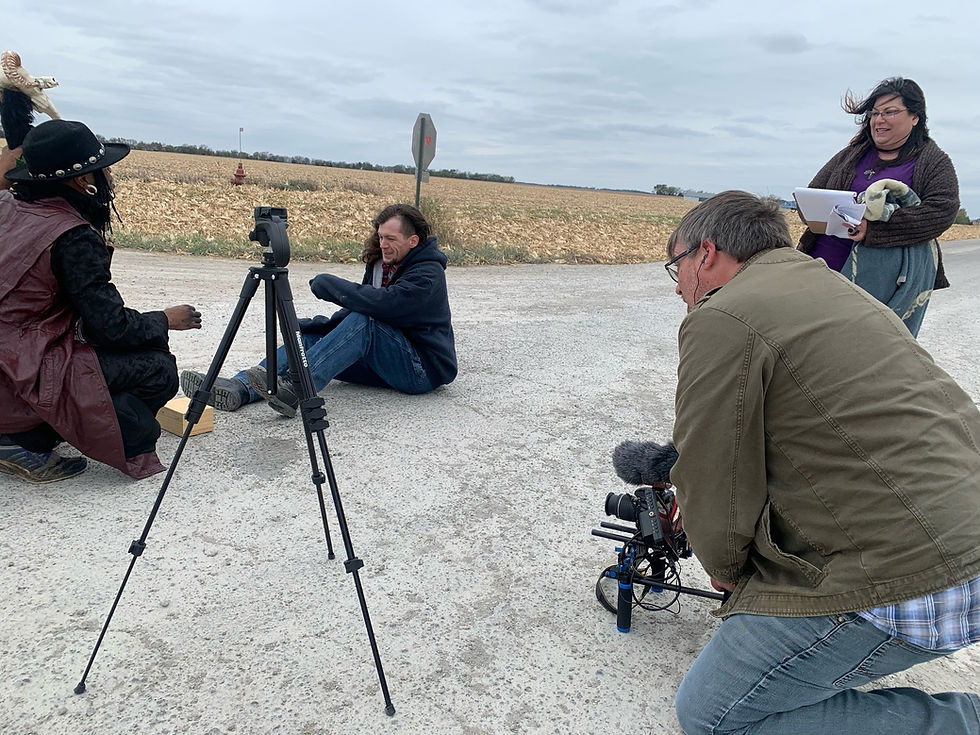The Rise of DSLR Filmmaking
- massevproductions
- Jun 7, 2024
- 3 min read
In the realm of visual storytelling, the democratization of filmmaking has never been more apparent than with the advent of DSLR cameras. Once relegated to capturing still images, DSLRs have now become powerful tools for aspiring filmmakers, offering affordability, versatility, and high-quality imaging. In this blog, we'll explore how DSLR cameras have revolutionized filmmaking, offering a gateway for creativity and expression.

Gone are the days when filmmaking was solely the domain of large production houses with hefty budgets. DSLR cameras have leveled the playing field, allowing independent filmmakers, enthusiasts, and even amateurs to produce cinematic-quality videos with minimal equipment. The ability to shoot high-definition footage with DSLRs has opened up new avenues for storytelling, enabling filmmakers to bring their visions to life with stunning clarity and depth.

DSLR cameras are significantly more affordable than traditional cinema cameras, making them accessible to a wider audience. This affordability allows filmmakers to allocate their budgets towards other aspects of production, such as lighting, sound, and post-production.
DSLRs are compact and lightweight, making them ideal for shooting in a variety of locations. Filmmakers can easily transport DSLR cameras to remote or challenging environments, capturing footage that would have been difficult or impossible with bulkier equipment.

One of the key advantages of DSLR cameras is their versatility. With interchangeable lenses, filmmakers can achieve a wide range of looks and styles, from sweeping landscapes to intimate close-ups. This flexibility allows for greater creative expression and experimentation.
Many DSLR cameras excel in low-light conditions, thanks to their larger sensors and advanced noise reduction technologies. This capability enables filmmakers to capture stunning images in challenging lighting situations, without the need for additional lighting equipment.
DSLR cameras offer greater control over depth of field, allowing filmmakers to achieve cinematic looks with beautifully blurred backgrounds and tack-sharp subjects. This creative control adds visual interest and dimension to their videos, elevating the overall production value.
Tips for DSLR Filmmaking:

To harness the full potential of a DSLR camera, filmmakers should familiarize themselves with manual exposure settings, including aperture, shutter speed, and ISO. Manual control allows for precise adjustments and creative experimentation.
Lenses play a crucial role in achieving the desired look and feel of a film. Investing in high-quality lenses can significantly enhance the visual impact of DSLR footage, providing sharper images, better low-light performance, and smoother bokeh.
DSLR cameras are prone to shaky footage, especially when handheld. To maintain smooth and steady shots, filmmakers should use stabilization techniques such as tripods, gimbals, or shoulder rigs. These tools help reduce camera shake and ensure professional-looking results.
While DSLR cameras excel in capturing stunning visuals, their built-in microphones may not always deliver the best audio quality. Filmmakers should invest in external microphones or record audio separately to achieve clear and immersive soundtracks.
Post-production editing plays a crucial role in refining and polishing DSLR footage. Filmmakers can use editing software to color grade, add visual effects, and fine-tune their videos to achieve the desired cinematic look. Experimentation and creativity are key in the editing process.
Filmmaking with a DSLR camera opens up a world of possibilities for aspiring filmmakers, allowing them to unleash their creativity and tell compelling stories with limited resources. With affordability, versatility, and high-quality imaging, DSLRs have democratized the art of filmmaking, empowering filmmakers of all levels to bring their visions to life on the big screen. As technology continues to evolve, DSLR cameras will undoubtedly remain a valuable tool in the filmmaker's arsenal, inspiring innovation and pushing the boundaries of visual storytelling.





Comments